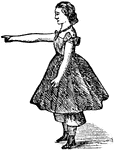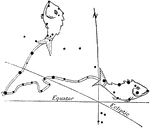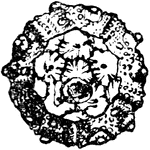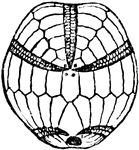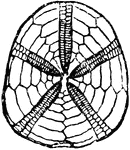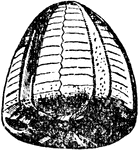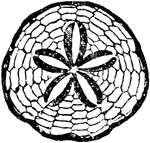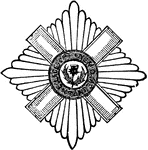Compasses
"The compasses, next to the T square and triangles, are used more than any other instrument. A pencil…
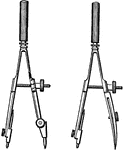
Compasses
"The compasses, next to the T square and triangles, are used more than any other instrument. A pencil…
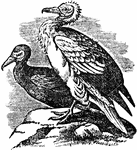
Egyptian Vulture
"One of the smaller Vulturidae, of a genus differing from the true vultures in the slender bill, which…

Carte
"Carte, Guard. Turn wrist with nails upwards; hand on a line with lower part of breast; arm somewhat…

Prime
"Prime, Parade. In using prime to parry the thrust in seconde, pass your point over the adversary's…

Quinte
"Quinte, Parade. Wrist in high carte, sword-point low, and oppose adversary from the forte of the outside…

Fowler's Plough
"A framework of iron, balanced upon two large wheels. To each side of this framework there are attached…
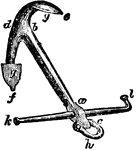
Common Anchor
"The shank is the straight part, ab; the square, ac, is that part of the shank to which the stock and…

Martin's Anchor
"The anchor is represented in the position in which it lies on the ground just before taking hold. The…

Lincoln Cathedral
"Sectional compartment of the Nave of Lincoln Cathedral." — Encyclopedia Britanica, 1893

Lincoln Cathedral
"Sectional compartment of the Choir of Lincoln Cathedral." — Encyclopedia Britanica, 1893

Gravity Train Remontoire
"E represents the scape-wheel turning in a minute, and e its pinion, which is driven by the wheel D…

Pricket
A sharp iron point upon which a candle may be struck; hence, a candlestick, either seperate or one of…
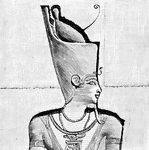
Pschent
A sovereign crown of Egypt, composed of the tall pointed miter, or white crown, of southern Egypt, combined…

Crown
"The crown of Henry III has a plain circlet heightened with trefoils, a slightly raised point intervening…
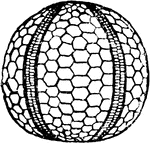
Fossil Echinidea
"Palaechinus sphaericus, Scouler; Carbouiferous, Ireland." — Encyclopedia Britannica, 1893

Fossil Echinidea
"Archaeocidaris Urii, Flem (spine and intermediate plate); Carboniferous, Ireland." — Encyclopedia…

Fossil Echinidea
"Cidaris glandifera, Goldf (spine); Jura, Mount Carmel." — Encyclopedia Britannica, 1893
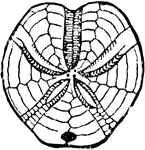
Fossil Echinidea
"Hemipneustes Greenovii, Forbes, U. Greensand, Blackdown" — Encyclopedia Britannica, 1893

Fossil Echinidea
"Cidaris florigemma, with spine, a, and single ambulacral plate, magnified, b, (after Wright; Coral…

Fossil Echinidea
"Pygaster semisulcatus, Ph.; Inf. Oolite, Cheltenham." — Encyclopedia Britannica, 1893
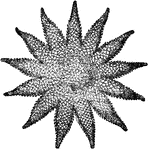
Solaster Papposus
"The common British species of Solaster, S. papposus, has ordinarily 13 rays." — Encyclopedia…

Astrogonium Phrygianum
"The rays are sometimes very short, or altogether wanting, the body having the form of a pentagonal…

Astropectenn Aurantiacus
"Section of ray of Astropecten aurantiacus. a, vertebral ossicles; b, adambulacral ossicles; c, d, marginal…
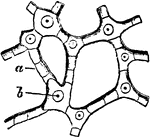
Asterius Rubens
"Tergal skeleton of Asterius rubens. a, connecting pieces; b, spinebearing plates." — Encyclopedia…
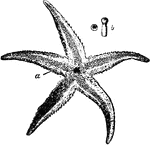
Asterius Rubens
"Asterias rubens. a, 4-ranked pedicelis; b, end of pedicel magnified." — Encyclopedia Britannica,…
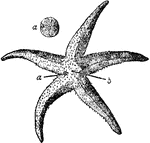
Asterius Rubens
"Antambulacral surface of Asterias rubens. a, madreporite; a', the same magnified; b, anus." —…
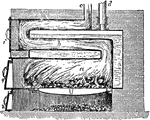
Saddle Boiler
"The fire is made under the principal arch a; the flame and smoke return through the flue b, and then…

Shield-Budding
"The simplest and most generally practised form of budding is that called Shield budding or T-budding.…

Tumbler Needle
"An improvement of great importance in the hosiery trade was effected through the invention of the tumbler…

Gas Liquidation
"M. Cailleter's apparatus is represented. The gas under experiment is contained in a stout glass tube…

Gas Liquidation
"M. Cailleter's apparatus is represented. The gas under experiment is contained in a stout glass tube…

Acropolis
"Acropolis, 'the highest point of the city.' Many of the important cities of Greece and Asia Minor were…
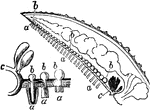
Ambulacra
"Ambulacra of Star-fish, As seen in a longitudinal and vertical section of one of the rays; and three…
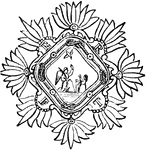
Order of the Annunciation
"The religious Order of the Heavenly Annunciation, or of the Nuns of the Annunciation of Mary, was instituted…

Steelyard
"The Steelyard is more portable then the ordinary balance. It consists of a lever, AB, moving round…

Cusp
"Cusp, in architecture, is the point formed by the meeting of two small arches, or foils, in foil arches,…

Limulus
"Section through a portion of the lateral eye of Limulus, showing three ommatidia—A, B and C.…
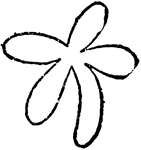
Rhabdom
"Transverse section of the rhabdom of a retinula of the scorpion's central eye, showing its five constituent…
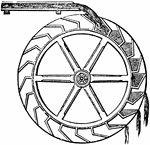
Water-wheel
"A wheel driven by water shot over the top. The buckets of the wheel receive the water as nearly as…

Dormoy's Rabble
"Dormoy's rabble differs from others of this class in being worked by rotation like a hair-brushing…

Dormoy's Rabble
"Dormoy's rabble differs from others of this class in being worked by rotation like a hair-brushing…

Refraction
"The following simple experiment illustrates the effect of refraction:—Place a silver coin, m,…

Flattened Eye
"A representation of the manner in which the image is formed in the eye, when the cornea or crystalline…

Magnetic Telegraph
"Morse magnetic telegraph will be understood by reference to the accompanying diagram, which represents…
